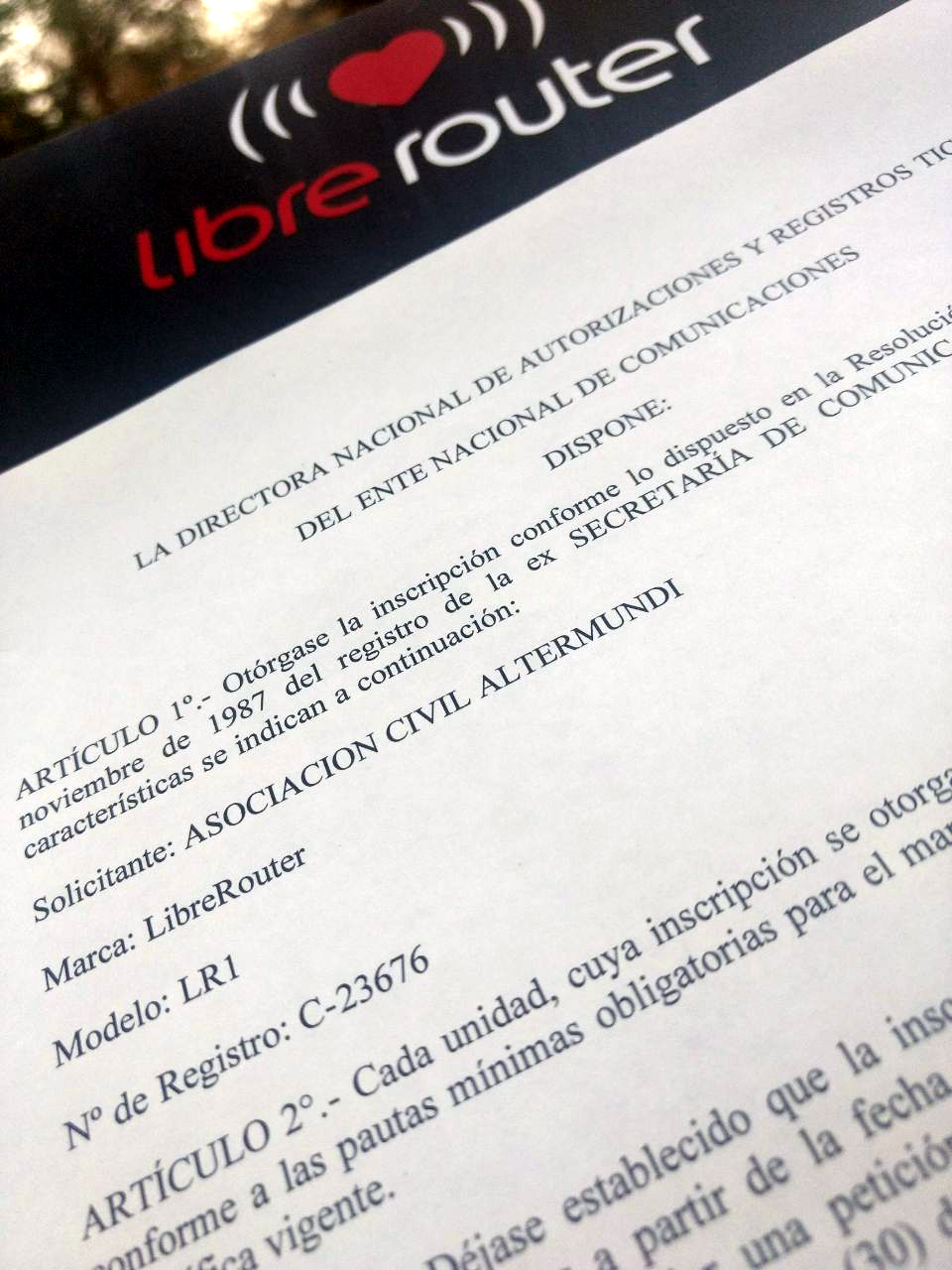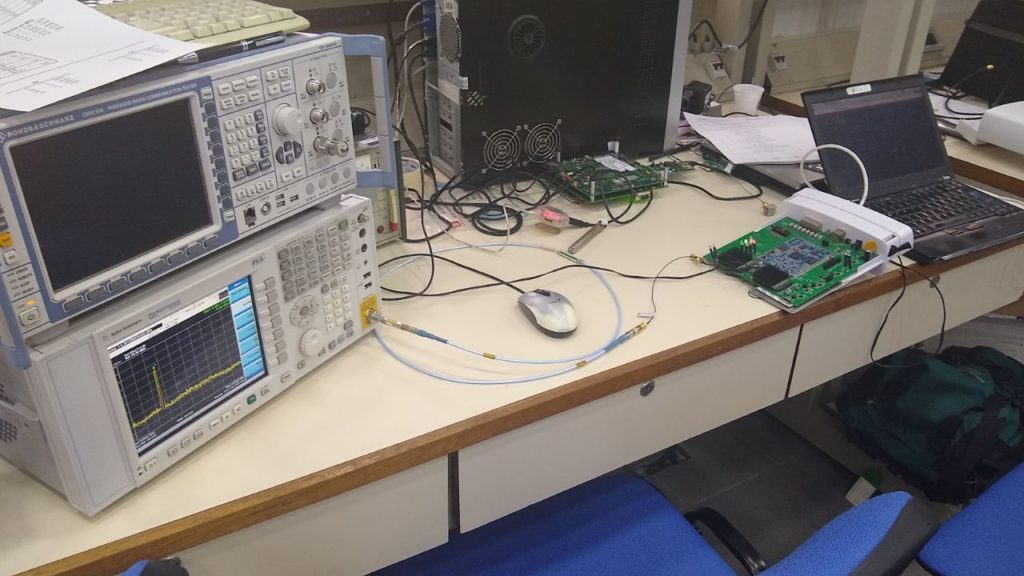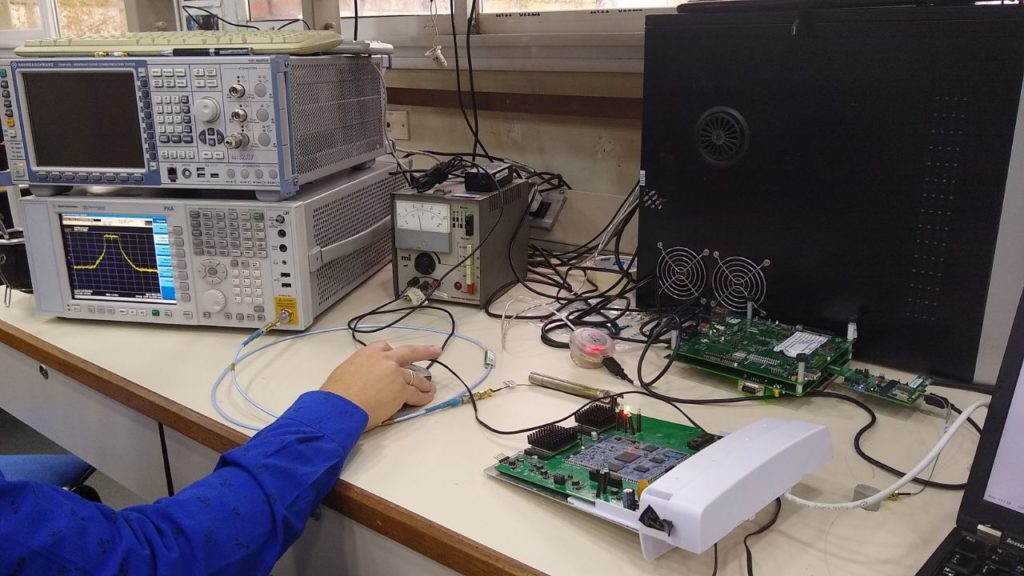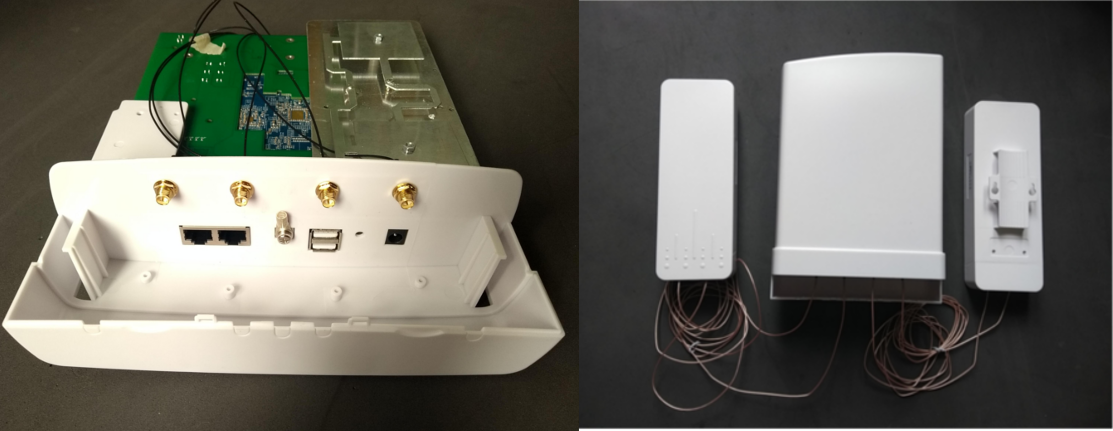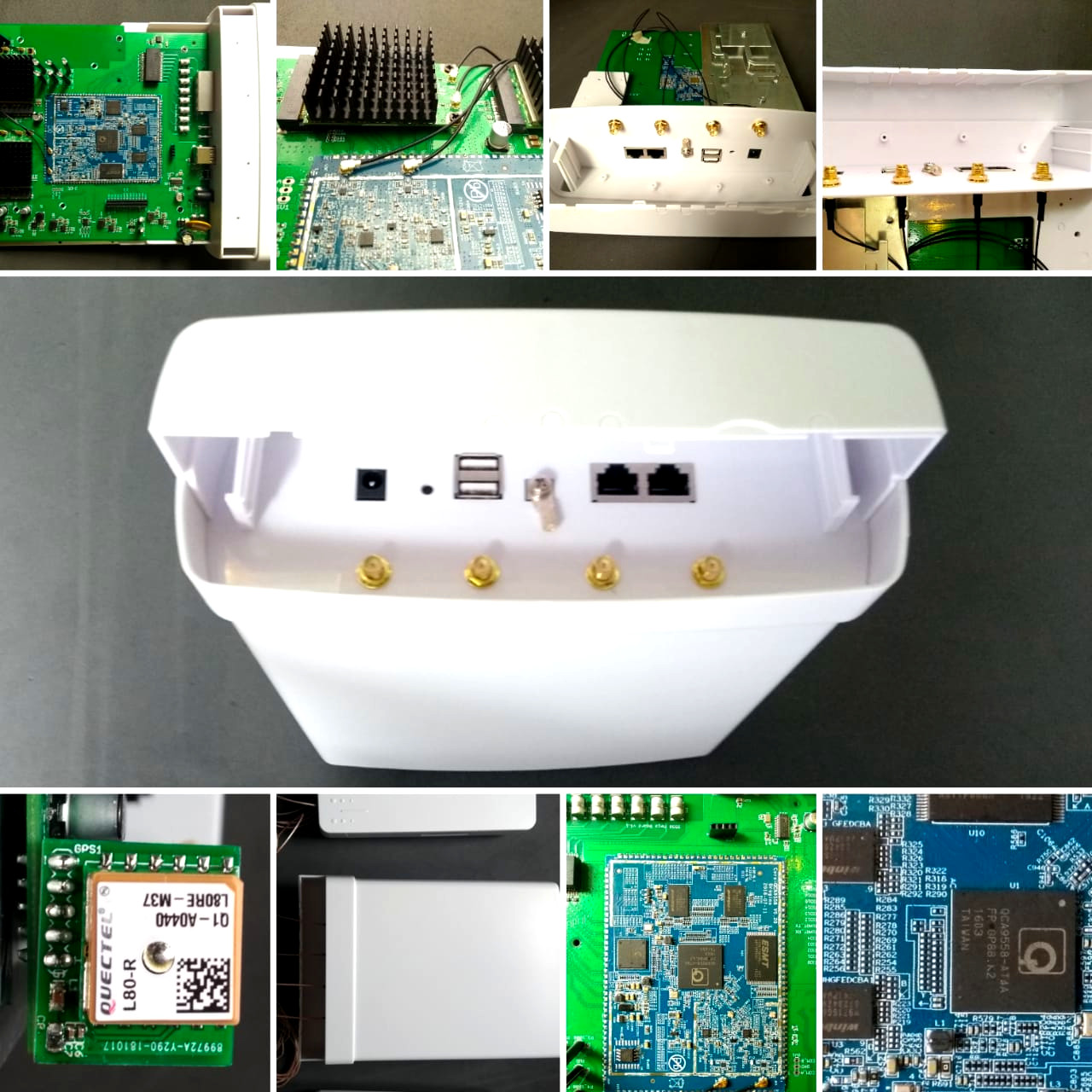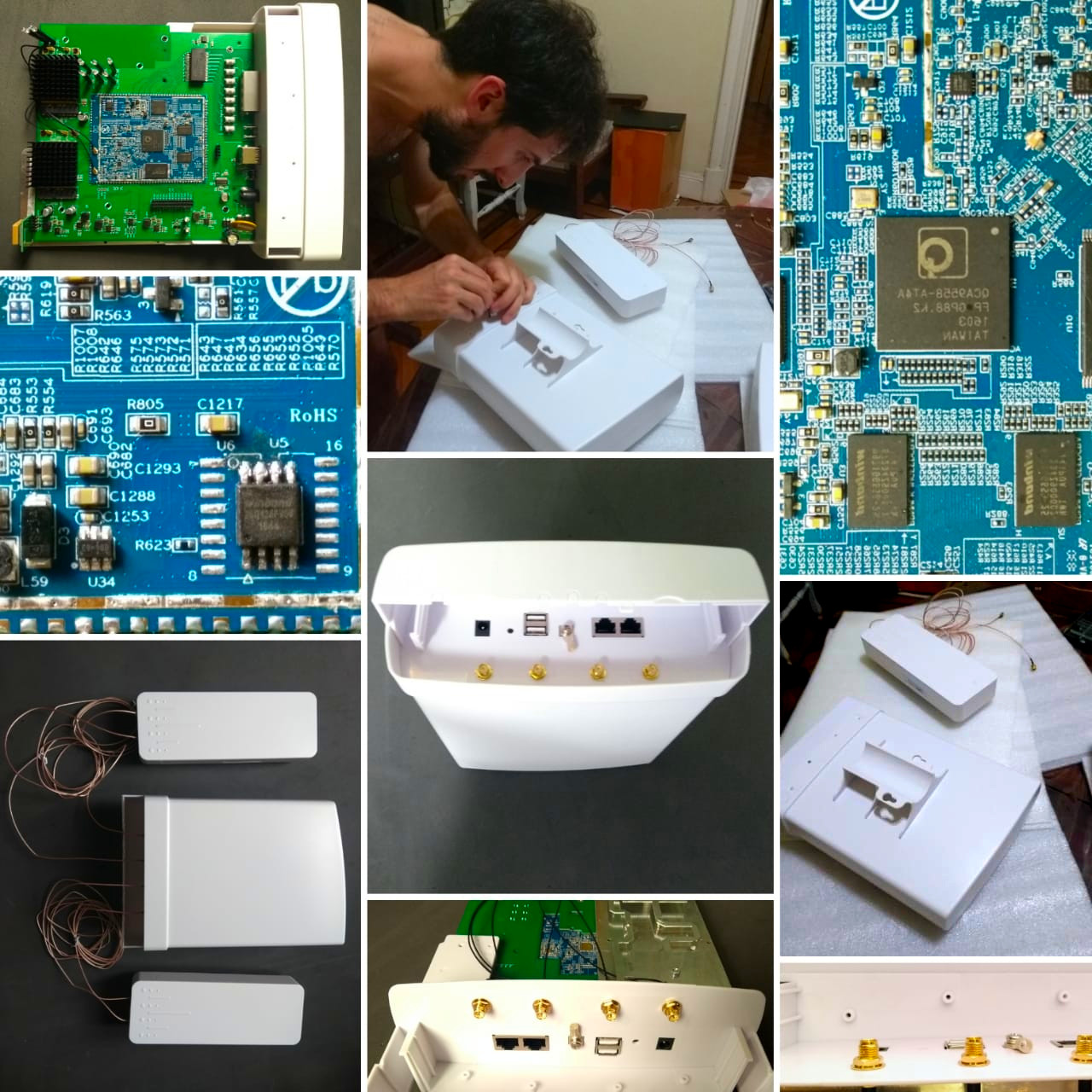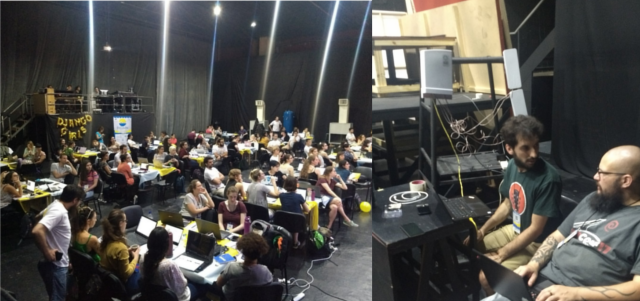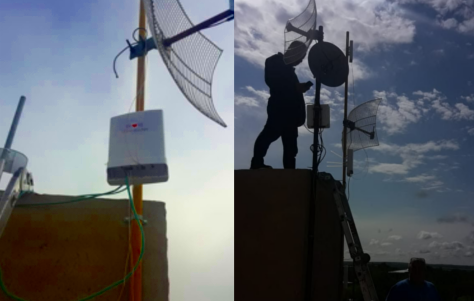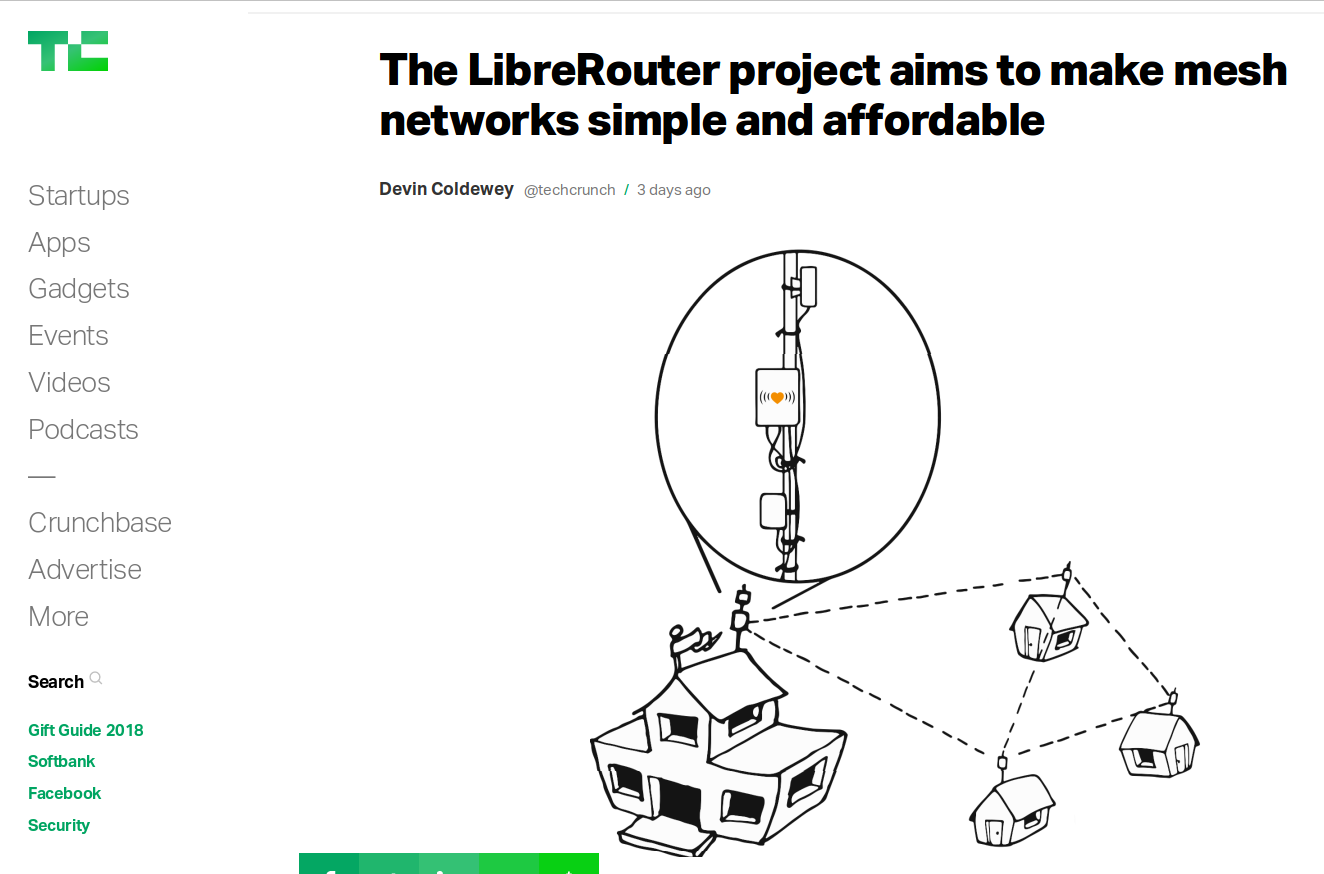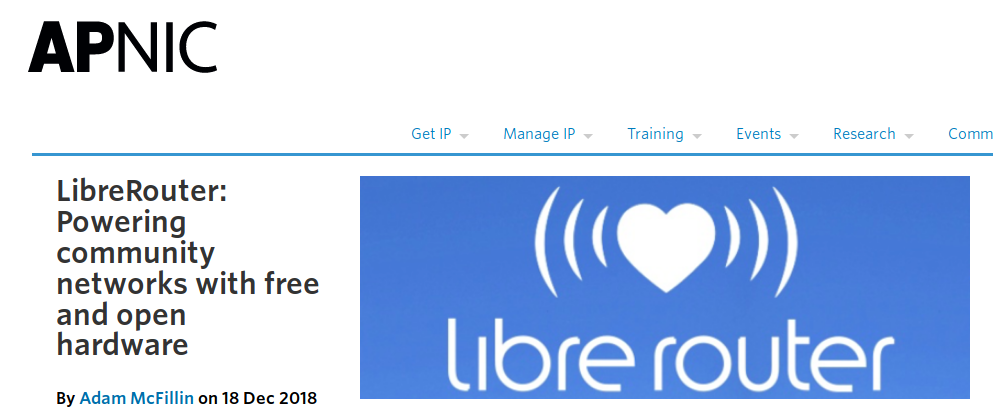In November, the latest version of LibreRouter arrived in Buenos Aires. SAn was in charge of doing the hardware testing and in this chronicle we told how this important moment was.
First of all, when unpacking the boxes, a review of the shipping was made. This consists of a check to verify if there is any breakage for the trip from China and that nothing is missing. The shipment consisted of 4 routers, their antennas with their pigtails and PoE injectors. Fortunately everything was as Dragino promised us 🙂
Resisting the temptation to plug in the routers, they were opened with a screwdriver and a detailed ocular inspection of the boards and their components was carried out, at the same time as it was recorded with photographs. This part is very important because it allows us to document how the boards associated with a manufacturing lot were received, so that in the future we do not have to remember if a chip was soldered or not, the exact part number of a component, etc.
Except for some small details (there were missing some pins in the GPS module, some LEDs had desoldado in the shipping) everything looked very good.
At last the moment arrived!
Using a laboratory power source and with a lot of excitement, the first LibreRouter was connected to 12V: some LEDs came on, others flashed, all right! A serial to USB adapter was connected to the pins of the serial port of the LibreRouter and it was observed to boot: the network interfaces raised, then the mPCI wifi modules and the onboard WiFi 🙂
Now, what to test?
This version of the LibreRouter changed significantly the organization of the boards. Originally the whole design was a single board and now there are two: the CoreBoard with the QCA9558 processor, memmory (RAM and Flash); and the MegaBoard, a peripheral expansion and power supply board.
Based on the great previous work of measurements made by the community in the first prototype, mostly carried out by Terry Gilliett, we had a roadmap of what to do.
In principle, make sure that what was working was still working and especially to review the changes we had requested from Dragino based on the issues we found in the tests of the first prototype.
At that time we had 20 issues that were documented in github, some of vital importance, others were details or improvements.
To enter the world of hardware measurements, the first thing we needed was to update and install the bootloader and firmware. A few weeks before the shipment arrived, SAn had resumed work in the bootloader to support the new boards, make some improvements and make an open source release of it:
The firmware that was used in the laboratory tests is based on OpenWrt 18.06.01 with modifications to support the LibreRouter
Once the LibreRouter was flashed with this software, all the hardware components were tested: Ethernet, USB, GPIO ports, button, LEDs, JTAG, GPS, power supplies, PoE, PoE Passthrough, HW watchdog and wireless. In general, everything went very well.
The wireless measurements of reception and transmission gave super well in the 3 radios:
- 1 embedded 2.4GHz radio with two Rx / Tx chains
- 2 mPCI 5.8GHz radios with two Rx / Tx chains
The details of wireless measurements can be read here
In this test some hardware problems arose in PoE and PoE Passthrough. Thanks to the community that develops the LibreRouter we find very fast solutions for these issues. SAn made new tests with these small hardware changes that only required a soldering iron, some resistors and capacitors.
This solved all the known hardware problems of the previous version and the current one 🙂
Indoor field testing.
During those days, PyConAr 2018 was celebrated in Buenos Aires and what better opportunity for our router to perform an indoor field test.
We used a LibreRouter to provide Internet to the Django Girls Workshop with near 100 atendees for a whole day.
Our LibreRouter performed great, WiFi coverage in 5.8GHz and 2.4GHz was very good!
Field testing outdoors.
In addition, the field tests of the LibreRouter are being carried out on the QuitanaLibre network, where the it is routing traffic of 20 nodes of the San Isidro network. In this test we are testing how well the antennas work, the box of the LibreRouter, that does not get water, that can be mounted easily, that it is robust, the PoE power supply and the use for long periods in outdoors.
Some documentation of measurements is here and here
Very soon we will have the LibreRouter available to everyone!


